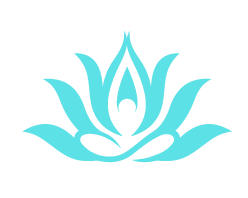What Is Special About Ashtanga Yoga? – 14 benefits of ashtanga yoga

What Is Special About Ashtanga Yoga?
Ashtanga yoga keeps your body moving in sync with your breath. The importance of breath awareness in this practice cannot be overstated. This type of movement meditation and continual concentration on the breath will purify and settle your mind, ease tension, and help you to change undesired behavior patterns.
When you do Ashtanga yoga, your body will move in time with your breath. In this exercise, being aware of your breath is very important. This moving meditation and keeping your attention on your breath will clear and calm your mind, make you feel less stressed, and help you break bad habits.
Ashtanga will help you remember who you are and keep you in the center daily. This practice teaches us to go beyond our minds, reach inner union, and gain a deep understanding of ourselves. You will feel calm, energized, relaxed, and free when doing Ashtanga yoga in Poway.
What makes Ashtanga yoga unique?

Ashtanga is a form of hatha yoga that is very active and athletic. It comprises six series or levels; the poses are always done in the same sequence.
It is based on vinyasa, which moves smoothly from one pose to the next while focusing on energy and breath. Even though it is a very physical exercise, it also helps clear the mind and find peace.
1. Both the outside and the inside change
Seeing how you change when you practice regular yoga and with determination is amazing. You will see small changes when you work on a stance and practice it.
One student told me that she would notice small wins and modifications in each class, like touching her fingers, lifting a little higher, holding a pose for longer, or staying balanced on a headstand.
All of these small things are signs of inner and outer growth. What does the outside world have to do with the person inside? I like how Pattabhi Jois’s son, Manju Jois, described it. We start with the body and then work on the mind and spirit. Over time, this will happen.
2. No special likes or dislikes
In Ashtanga yoga, you move through a set of poses. The series was made to open up the body gradually. Your yoga practice is the part of the series you are doing.
It is not a class that the teacher has already thought out. Teachers are there to help you and make changes and changes that you can feel. No matter how experienced or new we are, we all start with Sun Salutations A and B and some standing poses.
Some teachers may love backbends, while others may hate them. Some teachers like handstands and arm movements but hate hip stretches. What you learn in Ashtanga is based on something other than what the teacher wants.
We all bow to the lineage and honor what our masters have taught us. We usually stick to the set unless a student has a problem that makes it impossible for them to do a pose, which is rare.
3. On your own
You learn to remember the main series over time. Yes, this can be done even by people with the worst memories. After that, as a student, you are on your own. Even though it’s great to practice with a group and learn from a master, it’s important not to become too reliant on them.
What’s the meaning? If you can’t do yoga outside of school, even though you want to, this is a small sign of dependence. My goal as a teacher is to teach kids so they can sometimes practice on their own.
Sometimes, you need more time to go to class, or you might be moving. Doing something on your own is much better than not practicing at all.
Don’t get me wrong, though. Being dependent is not the same as liking and loving your master. I care about and love my kids, but I want them to feel good about themselves and what they can do.
Read:
Does Ashtanga Yoga Help You Lose Weight? – A Comprehensive Analysis In 2023
4. The exercise mat turns into a view in the mirror

Your yoga mat is a quiet place every morning. You are in sync with the way you breathe and move. This means that practice is challenging every day. Sometimes, feelings like frustration, anger, worry, sadness, and so on may surface.
All of these things can happen. Or you realize that you feel a lot of happiness and peace. On the yoga mat, we sometimes think of these subtle, annoying feelings that we don’t want attention to.
You are learning to pay attention and become more aware. It can be challenging to be aware! It takes work to do something great.
5. Focus on practice and a strong dedication to training
We train 5–6 days a week in Mysore, India. Yes, I almost always do yoga. This is a promise, and it can be scary. But when you decide to do something, there is a change in your energy. Yoga stops feeling like a chore and starts helping you every day.
You learn to incorporate yoga into your day instead of just trying to do it. If you miss a day here or there, it’s okay. You get back on track. If you only have 15 minutes, you can do some standing poses and Sun Salutations.
6. Perform the same poses over and over

What? Doesn’t this sound dull? I’m always asked these kinds of things. Your body never stays the same from day to day. When you get on the mat, you learn much about your mind and know what you’ll do.
You can feel how stiff or flexible your body is. And see that your hips are getting wider and your shoulders are looser.
You can see your growth very clearly as time goes on. This is cool. If we treat yoga like a good friend, it will surprise us in big and wonderful ways.
7. Pushed and urged to look deeper inside themselves
Mysore style is the standard and best way to teach Ashtanga yoga. The only sounds in the Mysore room are the students’ breaths and the master giving the odd guidance.
When you do this kind of yoga, you should make it a moving meditation. Mindfulness is when you focus on your own body and breath.
Read:
Ashtanga Yoga Moon Days – How Can We Calculate In 2023
Benefits of Ashtanga yoga

1. Strength and flexibility of the body
Ashtanga yoga is a great way to get stronger and more flexible. The practice consists of some difficult poses that work the body’s muscles, including those in the chest, arms, legs, and bottom.
In difficult situations, you have to hold your body weight in many of these poses. This helps you build muscle and get stronger generally.
Ashtanga yoga can also help make your hips, legs, and back more flexible. The practice includes several forward folds, backbends, and twists, which stretch the muscles and increase their range of motion.
Regular exercise makes Beginners more flexible, making them less likely to get hurt when doing other sports.
2. Heart and Blood Vessels
Ashtanga yoga is an active exercise that involves moving all the time and taking deep breaths. This mix helps improve heart health by speeding up the heart rate and making the blood flow faster. Regular yoga practice can also help lower blood pressure and lessen the chance of getting heart disease.
3. Getting rid of stress
The practice pushes people to pay attention to their breath and stay in the moment, which can help lower worry and stress by calming the nervous system. When you do yoga regularly, your body’s stress hormone cortisol levels can go down. This can make you feel better and improve your mental health.
4. Think about
Concentration and mental attention are needed for Ashtanga, especially when going through difficult poses. You use ujjayi breath in a series as you move from one yoga pose to the next. This is when you breathe out through your nose and make a sound. Ujjayi’s breath helps calm the mind and bring attention to the here and now.
5. Better Absorption
You boost your gut system and add blood to your innards as you train. This can help with gas, diarrhea, and other stomach problems. It would help if you moved daily for good gut health, and Ashtanga practitioners are told to exercise six days a week.
6. Breathing got better
One of the most important parts of Ashtanga yoga is to move in time with your breath. We’ve already talked about how to breathe in Ashtanga. Deep, controlled breathing helps expand your lungs and live more, improving your general health and energy.
8. Thoughts Made Clear
Ashtanga yoga involves controlling your breath, moving your body, meditating, and being aware of the present moment. This helps get more oxygen to your brain, which can help you think more clearly and focus.
Ashtanga yoga uses conscious and controlled breathing methods to help control the breath and turn on the body’s relaxed reaction. This reduces stress and brings about a calm state of mind.
Ashtanga yoga poses (asanas) are fluid and dynamic, requiring focused attention and concentration. This can help calm the mind and improve mental clarity.
9. The immune system is stronger.
Regular Ashtanga yoga practice can help lower stress and benefit the nervous system. Chronic stress can weaken the immune system.
Ashtanga yoga’s mix of physical movement, breath control, and mindfulness routines can help lower pressure and promote a state of relaxation, which can help the immune system work better.
Ashtanga yoga exercises (asanas) also involve physical moving and stretching, which can boost the lymphatic system. The lymphatic system is in charge of getting rid of waste and toxins from the body, which could improve immune function.
10. More ways to move around
Ashtanga yoga’s powerful and difficult poses (asanas), which require flexibility, strength, and steadiness, can increase your range of motion. Ashtanga yoga moves involve stretching, turning, bending, and balance, which can help improve flexibility, movement, and joint health.
When you do Ashtanga yoga regularly, your muscles, tendons, and ligaments can gradually become more flexible. This gives your joints a wider range of motion. Ujjayi breathing can help relax muscles and let go of stress, which makes it easier to stretch deeper and move in more ways.
When you do Ashtanga yoga poses repeatedly, this lets you move more freely and with more control. This can help relieve back pain and other long-term pain in the muscles.
By doing Ashtanga yoga regularly, people can improve their ranges of motion, become more flexible, and move around their bodies more easily.
11. Self-awareness and “being in the moment.”
Ashtanga yoga can help people become more self-aware and mindful because it focuses on being aware of the present moment and doing exercises on purpose. It pushes people to develop a strong link between their breath, body, and mind as they move through difficult and active poses.
During the practice, a person is more aware of their physical feelings, breathing patterns, and mental states. This can help them become more self-aware and more in tune with their internal experience.
Ashtanga yoga also includes techniques like meditation and awareness, which require you to pay close attention and notice your thoughts and feelings without judging them. Mindfulness is a state of nonjudgmental awareness of the present moment.
These techniques build mental strength, which can be taken off the mat in daily life to improve self-awareness and mindfulness in many areas.
By doing Ashtangdailyy basis, people can become more self-aware, develop focus, and learn to be more aware of their thoughts, feelings, and behaviors.
12. Better sleep
Ashtanga yoga can help you sleep, making you less stressed and more relaxed. The practice helps people relax and calm their minds, allowing them to sleep better and feel refreshed.
13. Community and Getting Together
Ashtanga yoga allows people to meet others with the same interests and build community. When people practice together, they can feel encouraged and supported.
14. Develop a good attitude
The practice is hard and needs patience, drive, and concentration. People can build up mental strength and a more positive view of life by doing hard poses and routines.
Also, the practice pushes people to think about themselves and look inside themselves, which helps them find bad thought habits and replace them with positive ones.
Read:
Why Is Ashtanga Yoga Considered To Be The Most Difficult? – Complete Guide 2023
Conclusion
Ashtanga yoga has many more perks to help you live a healthy, happy, and productive life. This yoga focuses on building muscle and getting stronger. Ashtanga gives your body a new lease on life by making it stronger, more toned, flexible, and easier to manage.
The final goal of Ashtanga is to clean up the body and the mind. So keep practicing this marvelous yoga and find several benefits.
FAQs
Q: Why is Ashtanga so good?
Ashtanga gives you an amazing sense of peace inside. Ashtanga yoga is a strong way to change the way your body works. It helps people focus, stay balanced, and work together better.
Q: How is Ashtanga yoga different?
Ashtanga yoga moves take place in a certain order.
Q: Is Ashtanga the hardest yoga?
Ashtanga is considered the hardest type of yoga because it requires a lot of patience and self-control.
Q: Which part of Ashtanga yoga is the most important?
Samadhi, the last step where you connect with God, is the most important part, in my view.
video guide
read also
- Yoga For Nightfall: 5 Asanas Preparing Your Body And Mind For A Peaceful Night
- Can We Do Yoga And Gym Together? – How Can You Schedule On Same Day 2023
- Why Do You Like Yoga?- Uncover The Transformative Power And Personal Benefits 2023
- How Long Does It Take To Become Good At Yoga? – Mastering The Art Of Yoga In 2023
- Is Yoga Considered A Type Of Hindu Ritual? – Separating Myth From Reality 2023
- Can Chronic Kidney Failure Be Healed By Yoga And Meditation? 5 Effective Poses For CKD Patient






